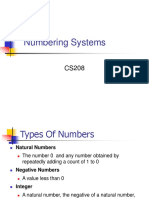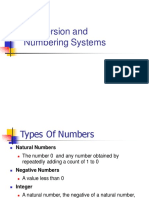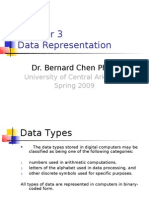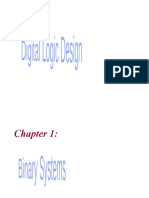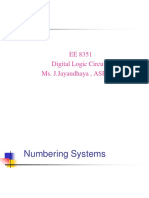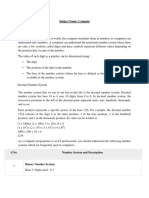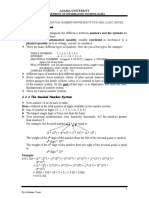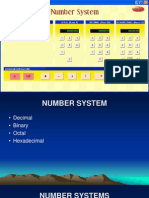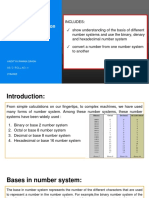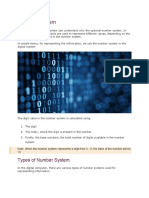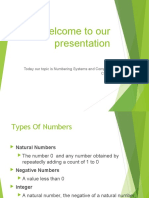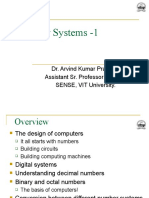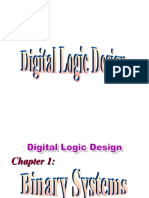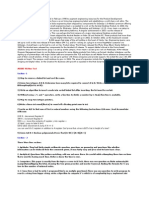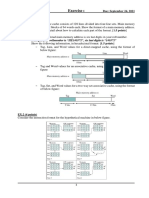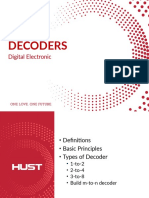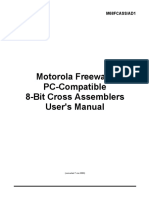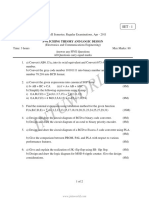0% found this document useful (0 votes)
24 views55 pagesChapter 2 - Encoding Scheme and Number System
Chapter 2 discusses various encoding schemes and number systems, including decimal, binary, octal, and hexadecimal. It explains the methods for representing and calculating numbers in these systems, emphasizing concepts like face value, place value, and conversion between different bases. The chapter also covers addition, subtraction, and the significance of bits in binary representation.
Uploaded by
demonkinggamingalpha00Copyright
© © All Rights Reserved
We take content rights seriously. If you suspect this is your content, claim it here.
Available Formats
Download as PDF, TXT or read online on Scribd
0% found this document useful (0 votes)
24 views55 pagesChapter 2 - Encoding Scheme and Number System
Chapter 2 discusses various encoding schemes and number systems, including decimal, binary, octal, and hexadecimal. It explains the methods for representing and calculating numbers in these systems, emphasizing concepts like face value, place value, and conversion between different bases. The chapter also covers addition, subtraction, and the significance of bits in binary representation.
Uploaded by
demonkinggamingalpha00Copyright
© © All Rights Reserved
We take content rights seriously. If you suspect this is your content, claim it here.
Available Formats
Download as PDF, TXT or read online on Scribd
/ 55

